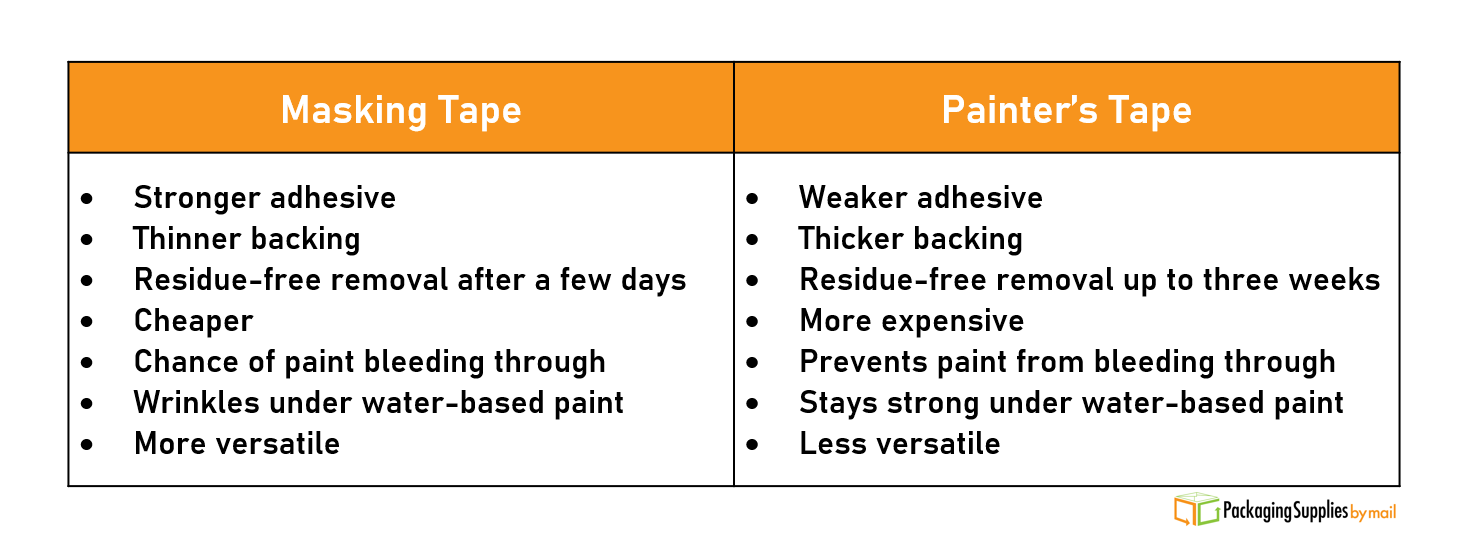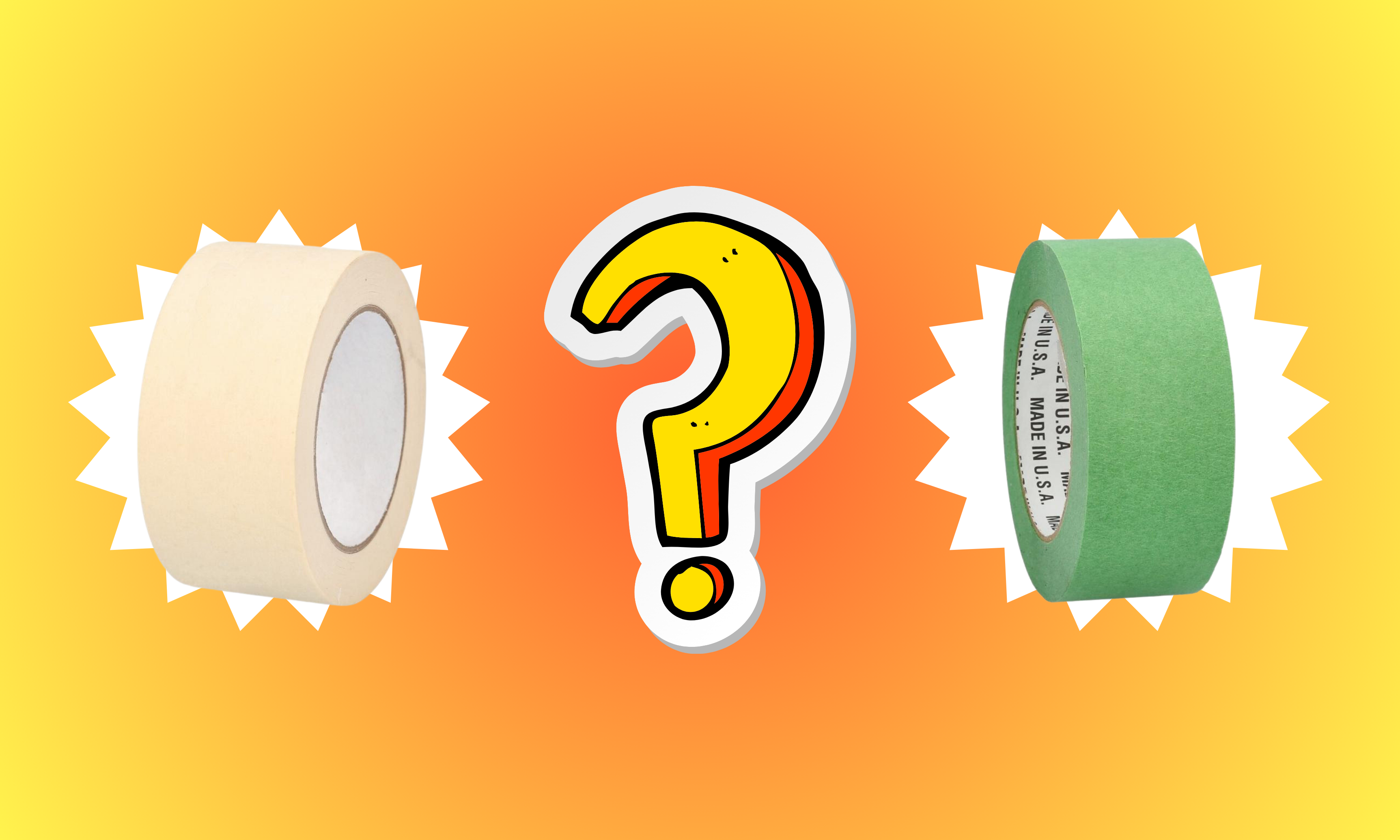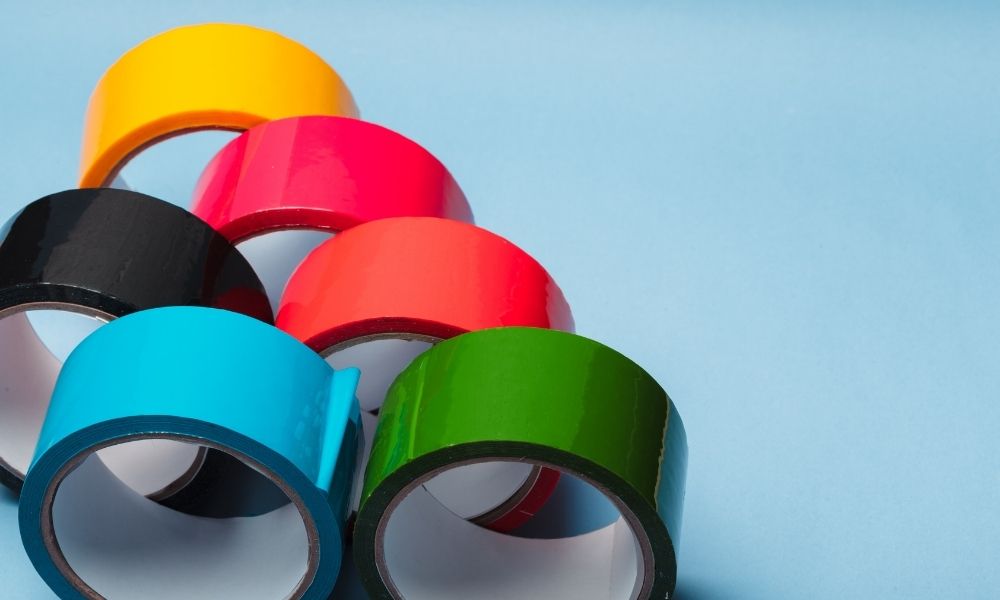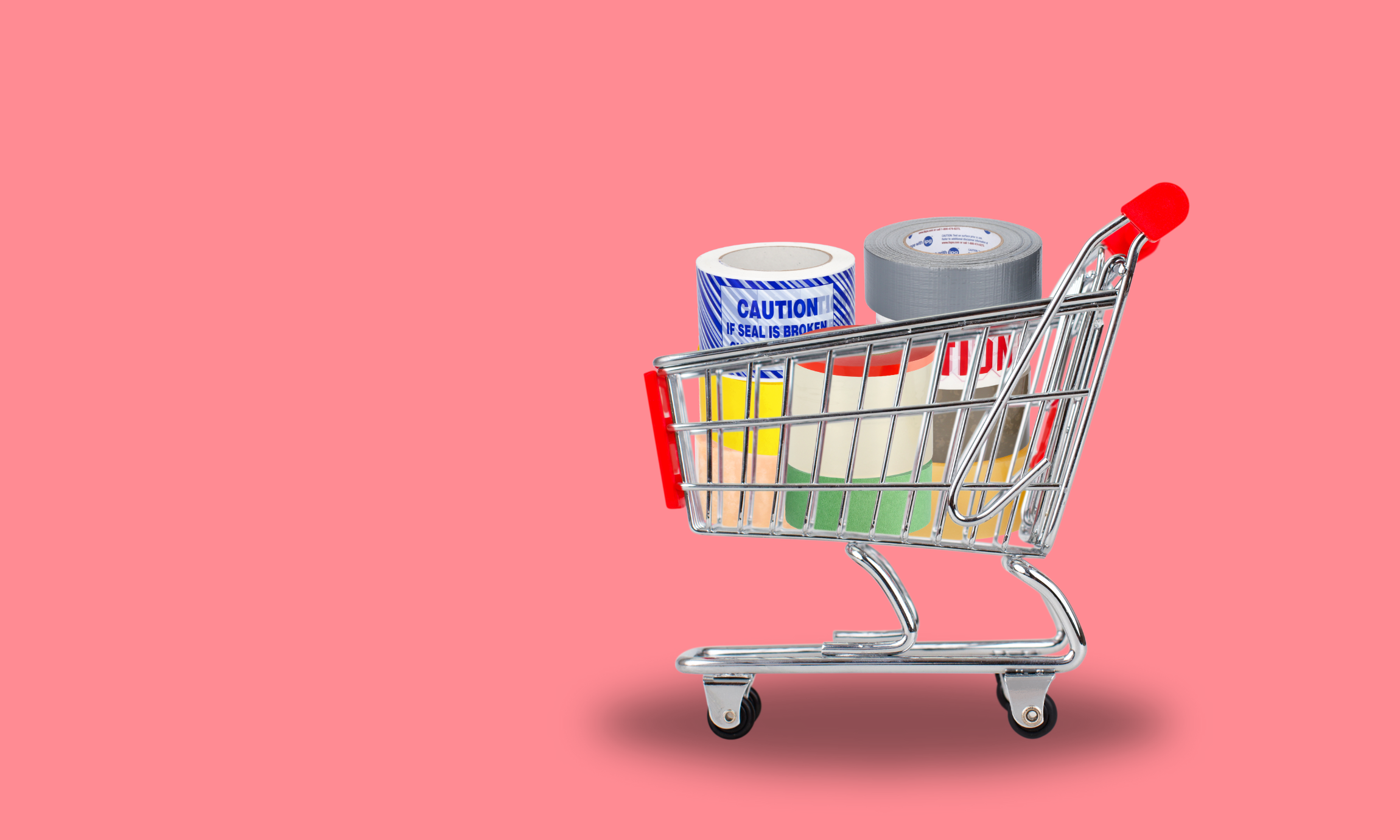Masking tape is one of the most popular kinds of tape out there. Beloved by DIY-ers across the world, masking tape is used for a wide variety of applications, including painting, labeling, sealing, and more. However, masking tape is commonly confused with another, rather similar tape: painter’s tape. Painter’s tape is, in fact, a kind of masking tape, but with a few key features that set it apart. In this article, we will explore what these different tapes are, what they do, and why all painter’s tapes are masking tapes, but not all masking tapes are painter’s tapes.
What is Masking Tape?
While some masking tapes are made from plastics like polyethylene terephthalate (PET) or polyvinyl chloride (PVC), most masking tape is made from crepe paper. Crepe paper is a strong tissue paper that prevents substances from bleeding through the material, yet is still light enough to be easily torn by hand.
Masking tape is a pressure-sensitive tape, meaning the roll of crepe paper is lightly coated on one side with a natural rubber adhesive and is set in place with an application of manual pressure. The light coating of adhesive allows the tape to stay in place, yet doesn’t leave behind an adhesive residue when removed after a few days.
What is Painter’s Tape?
As was previously mentioned, painter’s tape is a type of masking tape and arguably a better version of it. Also made from a crepe paper backing, painter’s tape is lightly coated with a layer of acrylic adhesive, a weaker adhesive than natural rubber. However, this choice of adhesive is intentional: the acrylic adhesive allows the tape to be removable up to three weeks after application without leaving a residue behind. Additionally, the tape’s crepe paper backing is typically thicker on average than standard masking tape.
Is Painter’s Tape Better?
For the most part, yes. While masking tape is more of a general-purpose tape, painter’s tape is specifically made for protecting surfaces during painting projects. As previously mentioned, the major advantage of painter’s tape is that it can stay in place longer without leaving behind a residue when compared to masking tape. Tape residue is a significant hindrance while painting, forcing painters to repaint sections two or three times over; this slows down progress and can be a big source of frustration. By keeping the residue at bay, the tape allows painters to complete their projects on time and worry-free.
Furthermore, the thicker, stronger paper backing of painter’s tape stands up better to certain kinds of paint than masking tape. In the presence of water-based paints, masking tape tends to buckle and wrinkle, ruining what would otherwise be perfectly straight lines. Additionally, weaker masking tapes have a chance of letting paint bleed through the material, which defeats the purpose of masking your surfaces. Painter’s tape, on the other hand, does not wrinkle in the presence of any kind of paint and is guaranteed to prevent your paint from bleeding through.
However, painter’s tape comes with one major disadvantage: the price. Painter’s tape will almost always be more expensive than masking tape, sometimes double the cost or more. This will have a significant impact on your budget if you plan on starting a substantial painting project. On top of this, the weaker adhesive of painter’s tape makes it less versatile, pretty much restricting it to painting and coating applications. On the other hand, masking tape, with its more robust adhesive, can be employed for a wide variety of uses, like temporarily bundling items or making labels, as an article of ours delves into.
If you’re looking to learn more about masking and painter’s tape, such as how it’s made and how to use it, take a look at this IQS Directory article that serves as a complete guide to these kinds of tape. And while you’re at it, be sure to check out our selection of masking and painter’s tapes, available in different sizes and strengths. We offer free shipping on all masking and painter’s tape products, so stock up today and see how these tapes can improve your household projects.









